
Business automation is evolving. The old generation of rule-based bots could follow scripts, but they couldn’t think. Today’s autonomous AI agents are different. They analyze, decide, and act independently, handling complex tasks, adapting to new situations, and even learning from interactions (all without human oversight).
The difference becomes clear when you look at real business challenges. For overnight customer service, while old chatbots would fail at anything beyond basic FAQs, leaving frustrated customers and overworked staff to clean up the mess, modern autonomous agents handle the entire process. They understand nuanced questions, pull information from multiple systems (including their knowledge base), and know exactly when (and how) to escalate issues. No more 3 AM emergencies for your human team.
For companies exploring automation of repetitive tasks, this shift changes everything. Instead of just answering FAQs, AI agents can now manage entire processes (customer support, sales pipelines, HR tasks) with minimal human input. But with so many options, how do you choose the right one?
That’s where this guide comes in. We’ll break down:
- What truly sets autonomous agents apart from traditional automation
- The key factors that separate effective solutions from disappointments
- An unbiased look at the 5 best autonomous AI agents available today (including where CogniAgent excels)
What Are Autonomous Agents?
Autonomous agents are AI-powered systems that can independently perceive their environment, make decisions, and take action to conduct specific tasks, all without constant human oversight. For comparison, traditional automation simply follows the “if-then” rules and handles routine tasks, while autonomous agents can:
- Understand context (they understand the meaning behind user input)
- Learn from experience (they can improve their answer output with each interaction)
- Handle uncertainty (they make reasonable decisions even when they don’t have complete information)
So, how do they work? (In simple terms)
- The agent receives new information (a customer question or a sensor alert)
- It processes information using natural language understanding and machine learning. It interprets the request and checks relevant knowledge bases
- After the analysis, it decides on the best action to take (e.g., answering a question, updating a database, etc.).
- The agent executes the task through integrations or external tools (it could be email, APIs, or voice calls)
- It learns and improves every step of the way
💡Example: When a retail customer asks, “Where’s my order, and can I change the shipping address?” Instead of transferring the customer to a human agent, the agent fetches tracking info, verifies that the address can still be updated, processes the change if possible, and informs the customer (all in one interaction). For businesses, this means fewer escalations, smoother processes, and improved customer experience.
Types of autonomous AI agents
Autonomous AI agents leverage natural language processing, generative AI, and reinforcement learning to operate with varying levels of autonomy. These agents are transforming key areas of business by solving complex problems that go beyond simple tasks. Below, we break down the main types and how they apply advanced reasoning capabilities to complete complex tasks in the real world.
Simple reflex agents
When evaluating the best autonomous AI agents, simple reflex agents represent the most fundamental architecture. They operate on direct stimulus-response principles, where certain actions are performed when specific conditions occur. In simpler words:
- These agents operate using condition-action rules (if-then statements)
- They are limited to simple tasks with immediate perceptions
💡Example: A thermostat that adjusts temperature based on current readings (no memory or long-term goals)
Model-based agents
Among the best autonomous AI agents available today, model-based agents offer significant advantages through their internal world representation. These are relatively sophisticated agents:
- They maintain an internal model of their environment
- Can handle incomplete information using their world model
- Use action sequences to achieve short-term objectives
💡Example: A vacuum robot that maps your home layout for more efficient cleaning
Goal-based agents
Goal-based agents are used for complex problem-solving (which typically involves goal-based architectures). While previous tools mostly have simple reactions, these agents evaluate multiple paths to achieve defined objectives. They:
- Work towards a set of goals using search and planning algorithms
- Can evaluate different paths to achieve objectives
- Employ natural language processing when interacting with users
💡Example: A travel booking agent that finds optimal flights based on budget/preferences
Utility-based agents
When precision matters the most, businesses address utility-based agents. These advanced systems can quantify outcomes to select the optimal solution from multiple valid options. They:
- Make decisions based on maximizing a utility function
- Can choose between multiple valid solutions to complex problems
- Often used in business applications where trade-offs matter
💡Example: A stock trading bot that balances risk vs. reward
Learning agents
It’s in the name! These are the most adaptable autonomous AI agents. They continuously improve through experience and can analyze past performance to refine their behavior. This trait allows them to handle more significant challenges beyond their original programming. They:
- Continuously improve performance through experience
- Use machine learning algorithms like reinforcement learning
- Can adapt to new situations, not in the original programming
💡Example: A customer service chatbot that gets better at handling complaints over time
Hierarchial agents
These systems stand out by organizing decision-making into specialized layers.
- Organized in layers with different levels of autonomy
- Lower layers handle immediate reactions
- Higher layers manage complex planning
💡Example: An autonomous vehicle’s decision-making system
Multi-agent systems
The most sophisticated of the best autonomous AI agents are multi-agent systems, which coordinate multiple autonomous tools:
- Multiple autonomous agents working together
- Can coordinate to solve problems too large for single agents
- Potential for malicious use if not properly designed
💡Example: A smart grid where agents manage energy distribution
How do autonomous AI agents differ from traditional automation?
Both autonomous and traditional AI have one goal: to streamline processes. However, they operate in fundamentally different ways. For example, traditional automation follows simply rigid and predefined rules (hence the limitations). Autonomous agents, on the other hand, use AI, machine learning, and adaptive reasoning to handle uncertainty and learn from past interactions. Let us demonstrate this side-by-side comparison to help you draw the line between these two tools:
| Feature | Traditional Automation | Autonomous AI Agents |
| Decision-Making | Follows fixed “if-then” rules | Uses advanced reasoning capabilities to assess context and choose actions |
| Adaptability | Cannot handle unscripted scenarios | Learns from experience and adjusts behavior |
| Data Processing | Works only with structured data | Interprets unstructured data (text, voice, images) via natural language processing |
| Error Handling | Fails when inputs deviate from expected patterns | Recovers from errors and improves over time |
| Task Complexity | Best for simple tasks with clear steps | Can manage complex problems requiring judgment |
| Human Intervention | Requires frequent manual updates | Operates independently with minimal oversight |
| Integration | Limited to predefined systems | Seamlessly connects with a number of tools via APIs |
| Learning Ability | Static – cannot improve on its own | Uses machine learning to optimize performance |
| Use Case Example | Automatically sending invoice reminders | Analyzing customer sentiment in social media to personalize responses |
5 Best Autonomous AI Agents in 2025
The autonomous AI agent market is still evolving (rapidly, however). New platforms offer additional functionality like integration of AI, more scalability, true emotional intelligence, and more. It’s challenging to differentiate platforms from one another and choose the one that fits your business the most. In this article, we’ve compiled a list of the best autonomous AI agents to help you analyze each and decide:
#1. CogniAgent – Autonomous AI Builder Platform
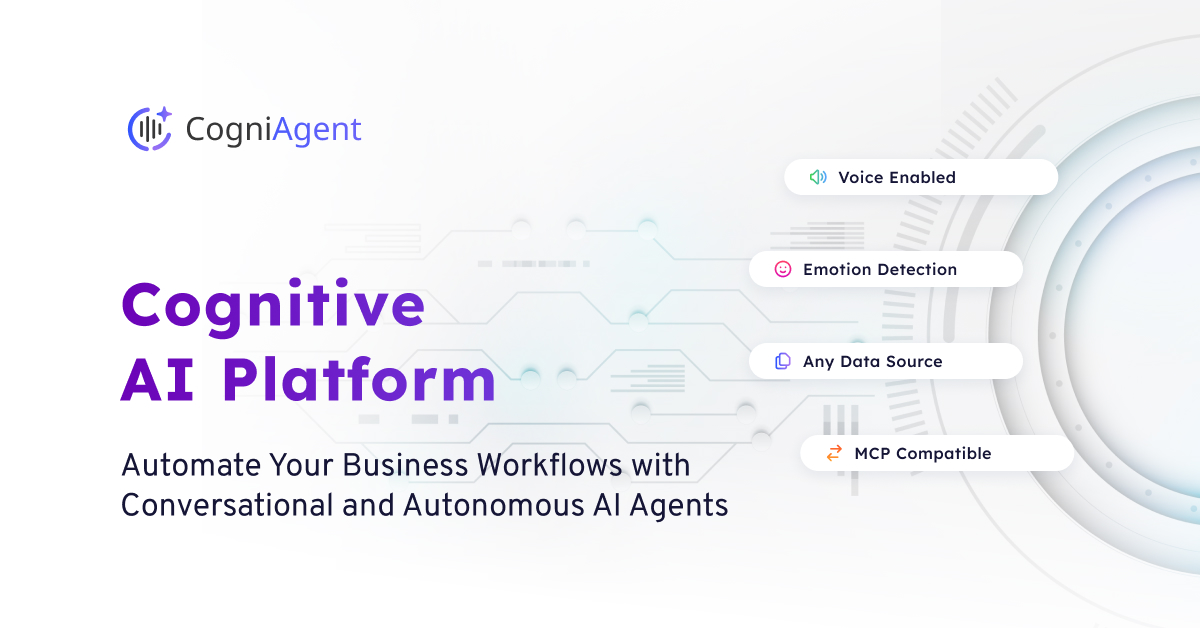
CogniAgent is an AI builder platform designed to let businesses create advanced, voice-enabled, emotionally intelligent agents without coding. Using a proprietary six-layer cognitive architecture, it combines data ingestion, semantic search, adaptive planning, and workflow execution into a single, unified environment. The platform supports all data formats (PDFs, videos, spreadsheets, APIs) and delivers human-like interactions that adapt to emotional cues in real time.
With a five-minute setup, enterprises can deploy agents that handle complex, multi-department workflows for sales, support, marketing, and research, all at a transparent $0.15/minute rate.
Best for: Enterprises seeking a no-code AI builder to create multi-function, emotionally intelligent agents that integrate across all departments
Key Features
- AI Agent Builder: No-code environment to create fully customized AI agents in minutes.
- Real-time Emotional Intelligence: Voice sentiment detection and tone adaptation for empathetic interactions.
- Universal Data Integration: Processes PDFs, videos, databases, spreadsheets, and APIs without format limits.
- Multi-Agent Planning & Collaboration: Planner module coordinates specialized AI agents for complex, adaptive workflows.
- Magic Window Visual Sync: Aligns visual content with conversational context for a richer user experience.
Pricing: Free plan with 500 credits; Pro plan – $33/mo; Business – $181/mo; Custom plan for enterprises
#2. HyperMindZ – Predictive Analytics Specialist
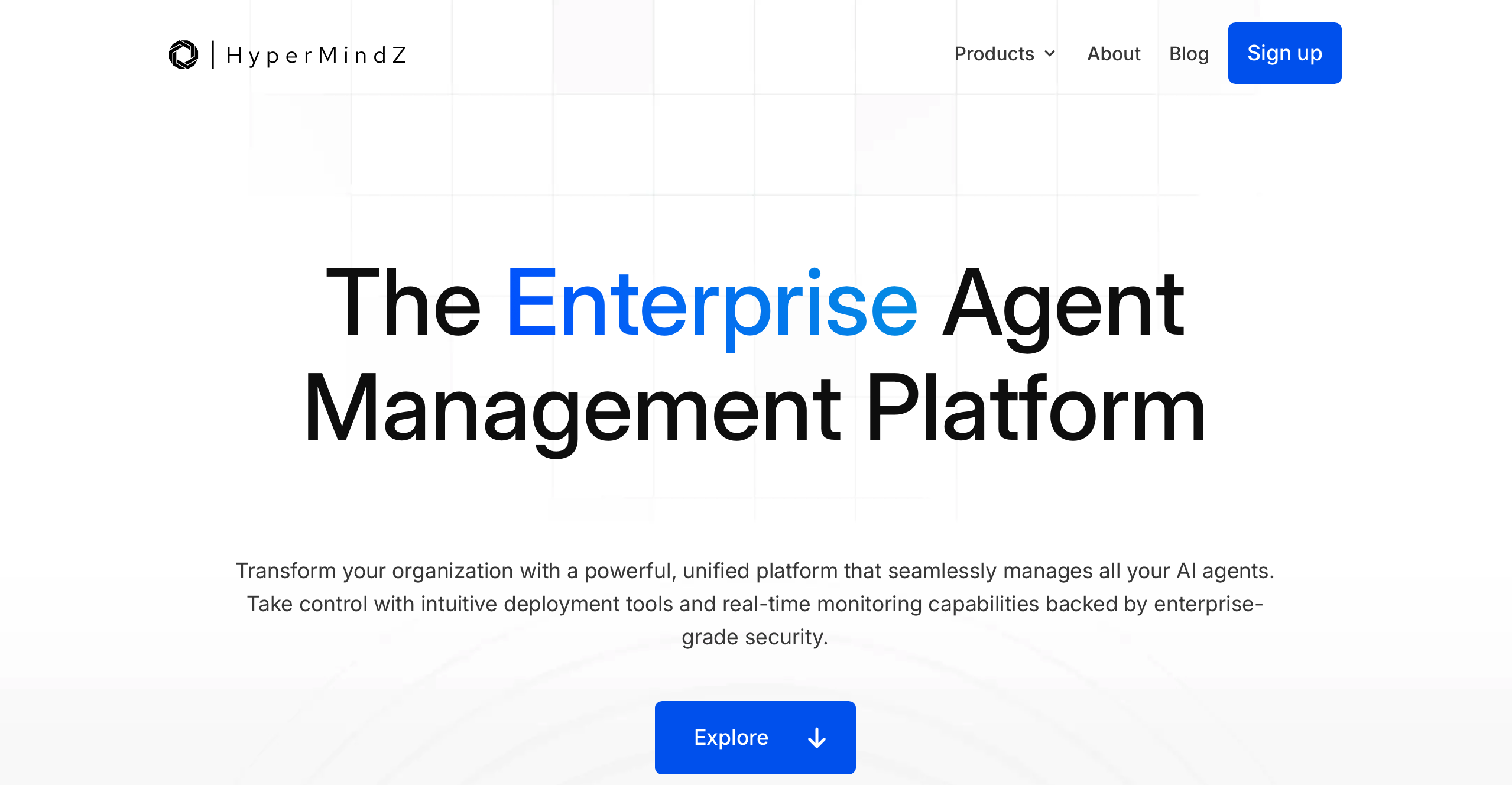
HyperMindZ is an autonomous AI platform optimized for predictive analytics, trend forecasting, and financial modeling. It leverages advanced statistical and machine learning techniques to detect patterns in large datasets, helping organizations anticipate future outcomes. While its strength lies in precision forecasting, it has limited emotional intelligence and requires longer deployment times compared to faster no-code solutions. The platform is a strong choice for data-heavy industries where accuracy and predictive power are paramount.
Best for: Financial institutions, investment firms, and risk management teams
Key Features
- Predictive Modeling: Advanced algorithms for forecasting business and financial trends.
- Pattern Recognition: Identifies anomalies and emerging patterns in real time.
- Financial Analytics: Built-in tools for portfolio, risk, and cash flow analysis.
- Scenario Simulation: Test strategies under various market and operational conditions.
- Data Integration: Connects with enterprise data lakes and BI systems.
Pricing: Custom enterprise pricing
#3. NeoAutomate – Integration-Focused Workflow Builder
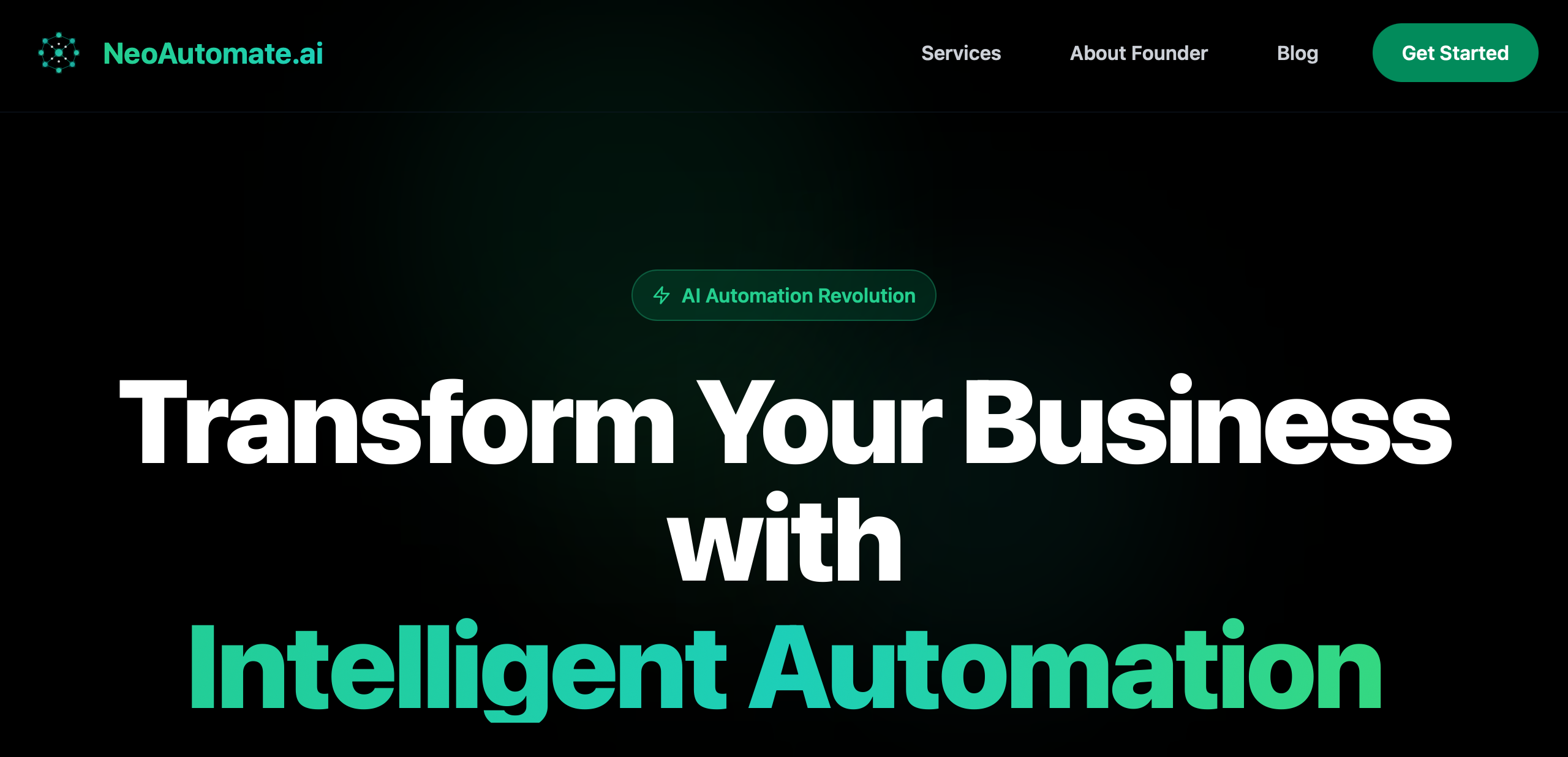
NeoAutomate is designed for organizations that prioritize system integration, offering an extensive API library and a visual workflow builder. With over 500 pre-built connectors, it enables quick connections between disparate business systems. The platform’s primary interface is text-based, and while it excels at structured workflows, it can struggle with ambiguous, unstructured queries. It is best suited for IT departments managing large integration projects.
Best for: IT departments needing reliable system integrations
Key Features
- 500+ API Connectors: Pre-built integrations with popular enterprise apps and databases.
- Drag-and-Drop Workflow Builder: Visual tool for creating automation pipelines.
- Role-Based Access: Secure workflows with granular permission settings.
- Data Mapping Tools: Simplify the connection between incompatible systems.
- Scheduling & Monitoring: Automate recurring jobs with tracking dashboards.
Pricing: Starts at $99/month
#4. Aegis Cognitive Systems – Security & Compliance AI
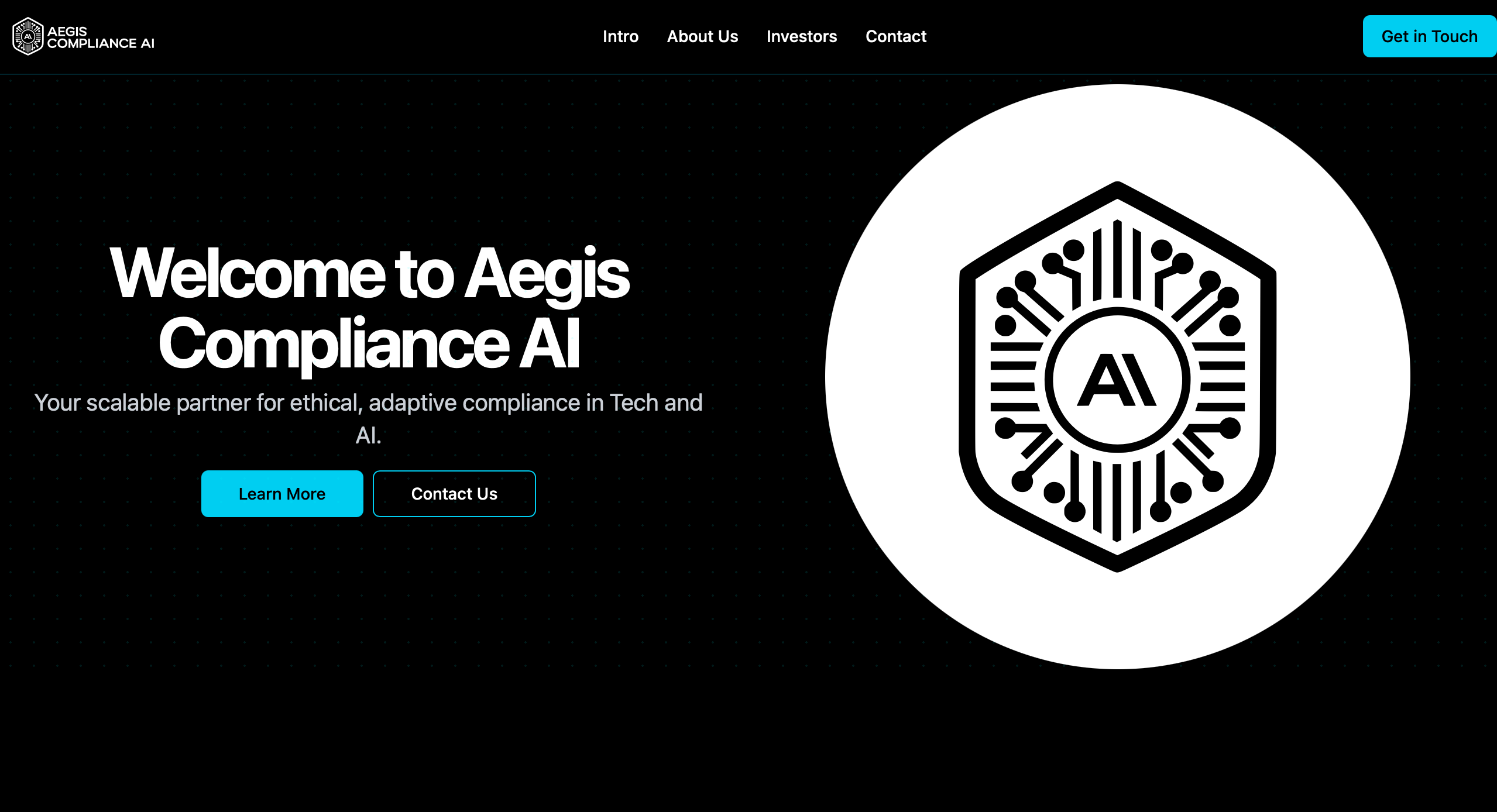
Aegis Cognitive Systems is a security-first AI platform built for regulated industries. It offers real-time threat detection, automated incident response, and built-in compliance with major standards like HIPAA and GDPR. While it’s highly specialized for security scenarios, it lacks flexibility for general business workflows. It’s an ideal fit for organizations where compliance and data protection are mission-critical.
Best for: Healthcare providers, government agencies, and compliance-heavy sectors
Key Features
- Real-Time Threat Detection: AI-powered monitoring for suspicious activity.
- Automated Incident Response: Execute pre-defined security protocols instantly.
- Compliance Frameworks: HIPAA, GDPR, and SOC 2 templates out of the box.
- Audit Trails: Maintain records for regulatory reporting.
- Secure Integrations: Works with SIEM, IAM, and endpoint protection tools.
Pricing: Custom based on security scope
#5. Manus – Fully Autonomous Digital Agent
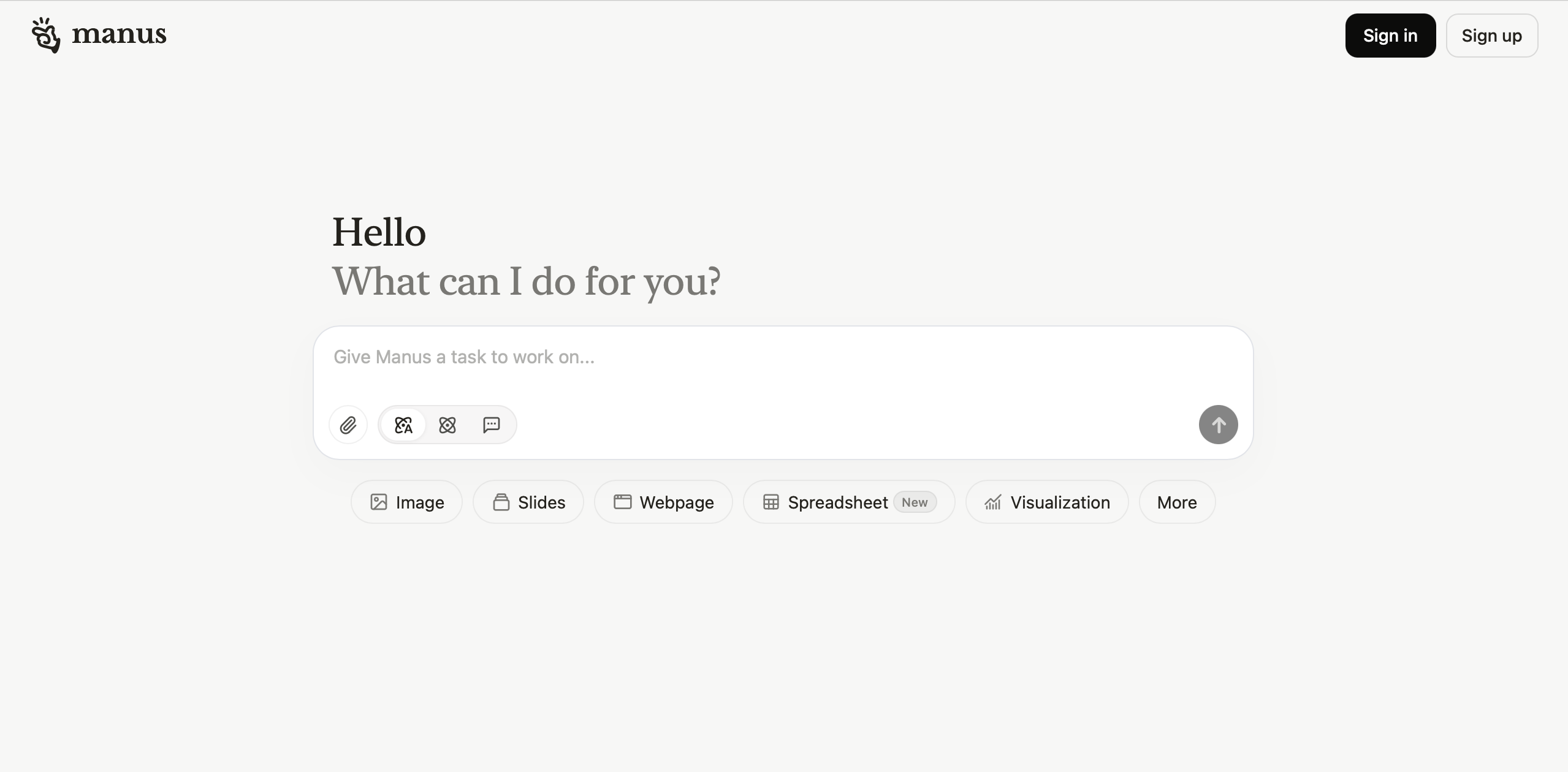
Released on March 6, 2025, Manus is an autonomous AI agent developed by Butterfly Effect Pte. Ltd. (Monica.im), headquartered in Singapore. It’s recognized as one of the world’s first agents capable of independent thinking, dynamic planning, and decision-making, operating without continued human oversight. Designed to bridge reasoning with execution, Manus can handle complex, real-world tasks end-to-end with minimal human intervention.
Key Features:
- Full autonomy: plans and executes complex tasks independently
- Real-world task handling: from writing code to problem-solving
- Mature architecture: incorporates reasoning, planning, and execution capabilities.
Best for: Organizations and research institutions exploring next-gen AI, especially initiatives around autonomous task execution and AI-driven reasoning.
How to Choose the Best Autonomous AI Agent for Your Business?
The list goes on and on, but you must select the right autonomous AI agent. The selection process requires evaluation of your business needs, tech requirements, and long-term goals. The best autonomous AI agents offer more than just automation – you just need to figure out exactly what you need:
- Start by identifying your use case (draft your key pain points)
- Evaluate the core capabilities your agent should have
- Consider the deployment time and levels of technical expertise needed to deploy and maintain the agent
- Request a pilot or a demo and test your new agent with real data
- Measure performance in accuracy, speed, and user satisfaction
By following this framework, you can confidently select one of the best autonomous AI agents that aligns with your business objectives.
How to prepare for autonomous agent implementation
Choosing the best option isn’t enough to call it a day (and a successful implementation). You actually need to prepare your company, staff, and yourself for autonomous agent implementation. Follow these easy steps to ensure a smooth rollout:
- Audit your processes
- Document workflows to identify automation opportunities
- Prioritize high-impact, repetitive tasks for AI delegation
- Clean and organize data
- Ensure your data is structured and accessible (CRM, knowledge bases)
- Remove outdated or duplicate information that could confuse the AI
- Train your team
- Educate employees on how the AI agent will assist them
- Define escalation protocols for when human intervention is needed
- Start with a pilot program
- Test the agent in a controlled environment (e.g., one department)
- Gather feedback and refine before full-scale deployment
- Monitor and optimize
- Track key metrics (resolution time, error rates)
- Continuously update the AI with new data and scenarios
Why Wait? Here’s How to Get Started with CogniAgent
Static and rule-based automation is in the past (although it’s still quite a new technology). CogniAgent represents the next generation of automation – a comprehensive platform that doesn’t just automate tasks but thinks, adapts, and grows with your business.
After reviewing the capabilities, use cases, and selection criteria for the best autonomous AI agents, we recommend getting started with CogniAgent:
- A unified platform for designing, deploying, and managing autonomous agents
- Continuous improvements that keep pace with AI advancements
- Flexible architecture that adapts to diverse business needs
Getting started is simple!
Request a demo or contact our representatives if you still have some questions for us.
Autonomus AI Agents FAQ
Can autonomous agents integrate with our existing CRM/ERP systems?
Yes. Leading autonomous AI agents like CogniAgent can easily connect with more than 2500 tools (including Salesforce, HubsPot, and more). Depending on which agent you choose, you can automate updating records, triggering workflows, and even analyzing data (all via voice or text without human intervention).
How quickly can we deploy an autonomous agent?
With CogniAgent, you can deploy in 5 minutes using pre-built templates. Most AI autonomous agents require weeks of coding, but our no-code platform gets you live faster.
Are autonomous agents AI secure for handling sensitive data?
Trusting your business’s or client’s sensitive data to artificial intelligence sounds scary. There are risks of a data breach, mishandling of information, etc. Businesses rarely trust virtual assistants without human supervision. We also recommend being attentive; however, choosing the best autonomous AI agent is also essential to ensure the safety of your data. Yes, autonomous AI agents can be trusted to handle customer data. For example, CogniAgent is SOC 2 and HIPAA-certified, with end-to-end encryption. Unlike open-source autonomous agents AI tools, we guarantee enterprise-grade security.